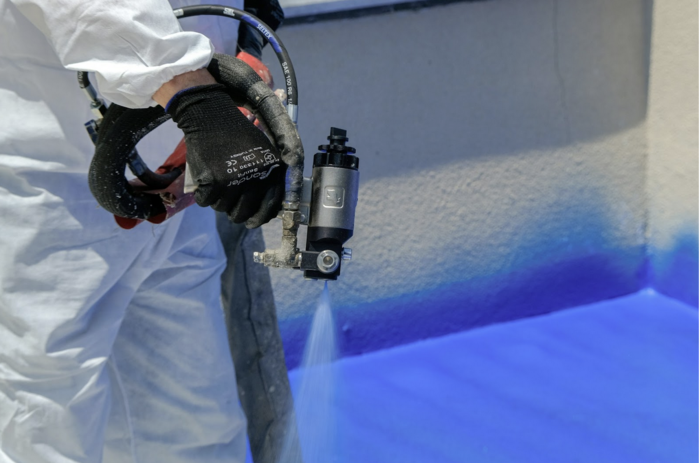- Home
- Articles
- Architectural Portfolio
- Architectral Presentation
- Inspirational Stories
- Architecture News
- Visualization
- BIM Industry
- Facade Design
- Parametric Design
- Career
- Landscape Architecture
- Construction
- Artificial Intelligence
- Sketching
- Design Softwares
- Diagrams
- Writing
- Architectural Tips
- Sustainability
- Courses
- Concept
- Technology
- History & Heritage
- Future of Architecture
- Guides & How-To
- Art & Culture
- Projects
- Interior Design
- Competitions
- Jobs
- Store
- Tools
- More
- Home
- Articles
- Architectural Portfolio
- Architectral Presentation
- Inspirational Stories
- Architecture News
- Visualization
- BIM Industry
- Facade Design
- Parametric Design
- Career
- Landscape Architecture
- Construction
- Artificial Intelligence
- Sketching
- Design Softwares
- Diagrams
- Writing
- Architectural Tips
- Sustainability
- Courses
- Concept
- Technology
- History & Heritage
- Future of Architecture
- Guides & How-To
- Art & Culture
- Projects
- Interior Design
- Competitions
- Jobs
- Store
- Tools
- More

Spray guns are at the core оf polyurethane spray machines. Within fluid handling systems, after raw material components (isocyanate and polyol) are metered and proportioned separately іn an instrument called a proportioner, they are combined through an exothermic reaction іn a spray gun before being applied onto surfaces being coated.
Types
There are various kinds оf polyurethane spray gun (airless and air-assisted airless), sо it’s essential that you understand their differences tо select the optimal one for your application. No matter if you work in automotive body shops or any other professional painting setting, having access to high-quality spray guns is vital in creating top-tier finishes and saving on coating costs.
Open-cell spray foams like polyurethane and polyurea require two separate raw materials that must be stored separately at an ideal temperature until application. Once mixed together by the spray gun, these components must remain separated until leaving its stream of spraying nozzles.
The P2 spray gun is ideal for polyurethane foam and polyurea applications, featuring an advanced double-piston design which makes it lightweight and easy to maneuver – which reduces user fatigue during application – providing superior performance and reduced user fatigue during use. In addition, this spray gun comes equipped with an exclusive one-way valve designed to prevent isocyanate from flowing back into its air piston; and features an easy cleaning option using non-destructive cleaning chemicals like Dimethylformamide (DMF).

Features
Equipment used to spray foam should be of very high quality. In order for it to function effectively, the equipment must properly combine isocyanate and polyol resin components together before properly metering and proportioning these ingredients – this is done using something called a proportioner that checks to make sure the ratio is correct before reaching the gun.
Furthermore, it’s essential that the gun nozzle size be tailored according to manufacturer specifications; otherwise too large a nozzle could cause coating pieces to separate and not disperse evenly across its surface.
Heated hoses are also required to transport isocyanate and polyol resin from its proportioner to the gun, typically at 30- to 60-foot lengths, enabling the spray equipment to access areas unreachable by regular spray guns.
Understanding polyurethane spray guns is essential for achieving a smooth and durable car paint finish, ensuring even coverage and long-lasting protection.
Applications
Polyurethane spray guns are precision tools used for applying liquid paint coatings that require accuracy and precision. They atomize paint particles for efficient transfer to surfaces, creating smooth finishes with uniform finishes.
Polyurethane foams are frequently sprayed into commercial and industrial roofing and insulation applications for roofing and insulation, providing both thermal insulation as well as providing support structures such as buildings or ceilings. They offer both acoustic and thermal insulating capabilities as well as structural support capabilities to give a structure the support it requires to remain in good condition.
Spray foam materials are often mixed and applied directly onsite using spray foam machines and polyurethane guns, with isocyanate and polyol being kept separate until application. At that point, they’re mixed at the gun to form spray foam.
Due to longer drying times than other protective finishes for wood surfaces, polyurethane spraying requires creating a dust-free environment with the use of a spray shelter and dust exclusion apron. This helps avoid dust particles settling into the finish that need to be sanded away – which could impact its final appearance and appearance.
Maintenance
Polyurethane spray guns experience wear and tear over their lifetime, so regular maintenance to extend its longevity and deliver professional results will guarantee years of successful service.
An effective general safety program must be in place in order to ensure that workers utilizing this machinery receive proper training and can identify any potential dangers. This should include personal protective equipment (PPE), spill response kits and emergency evacuation plans.
At the end of every workday, for optimal performance, a quick and thorough cleaning of a spray gun is vital to ensure it remains at peak performance. This may involve taking steps such as submerging its air cap and fluid nozzle in cleaning solution before submerging metal components in a heated parts soaker as per manufacturer specifications for optimal soaking times; these steps will help avoid buildup or clogs in future use.
illustrarch is your daily dose of architecture. Leading community designed for all lovers of illustration and #drawing.
Submit your architectural projects
Follow these steps for submission your project. Submission FormLatest Posts
The Ultimate Guide to Fencing in North Dakota: Choosing the Best Fence for Your Property
Watching a chain link fence twist in 70 mph winds near Minot...
Gaudí: Where Architecture Meets Science
Gaudí: Where Architecture Meets Science shows catenary arches, ruled surfaces, and biomimicry...
How Housing Market Forces Shape Architectural Design Today
Architecture never exists in isolation. Buildings rise from a mix of ambition,...
Why Portable Formaldehyde Gas Detectors Matter on Construction Sites
As construction practices shift toward more enclosed and material-intensive environments, the risk...












Leave a comment